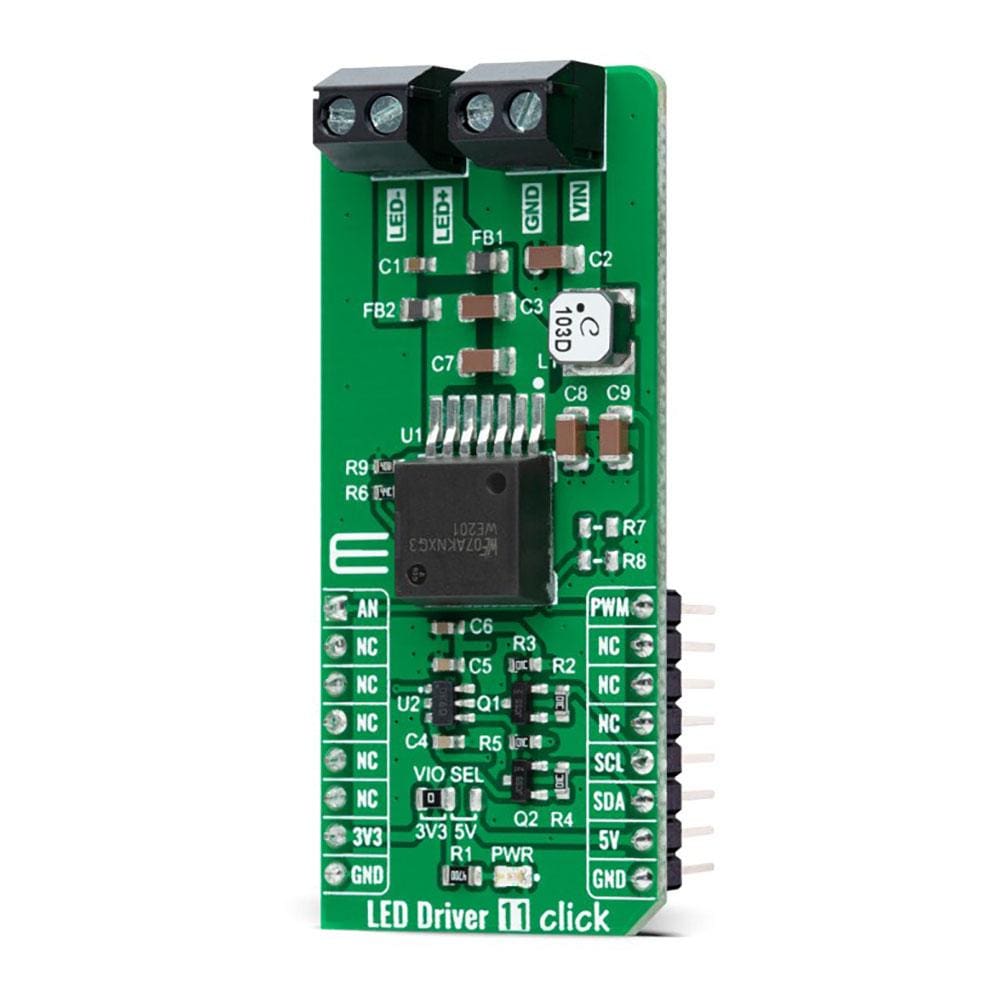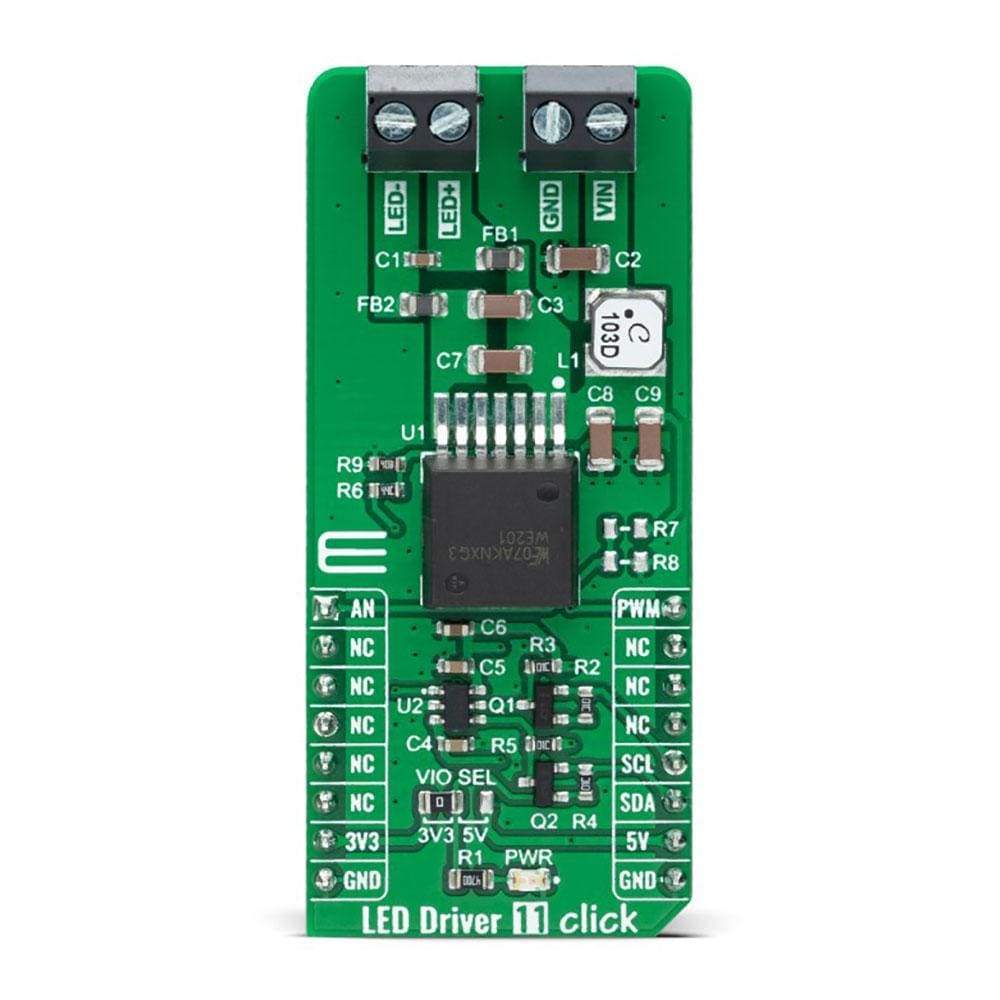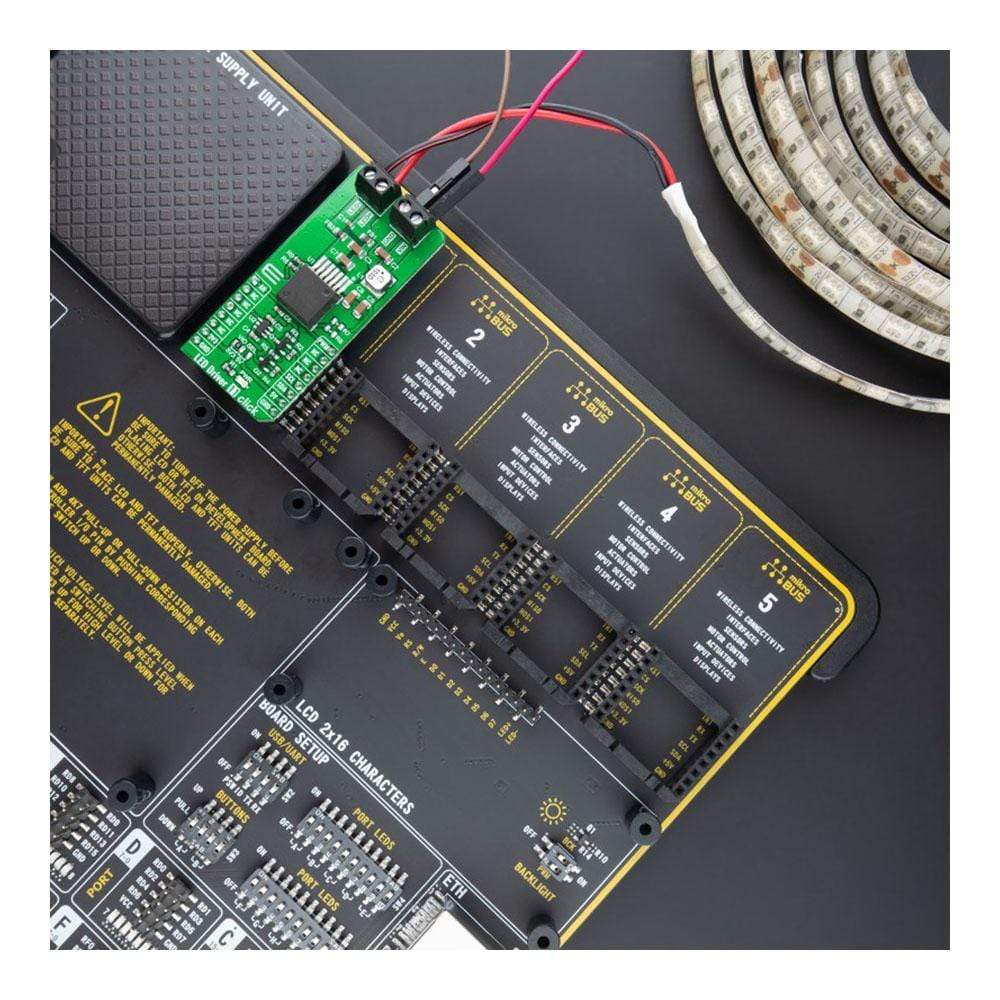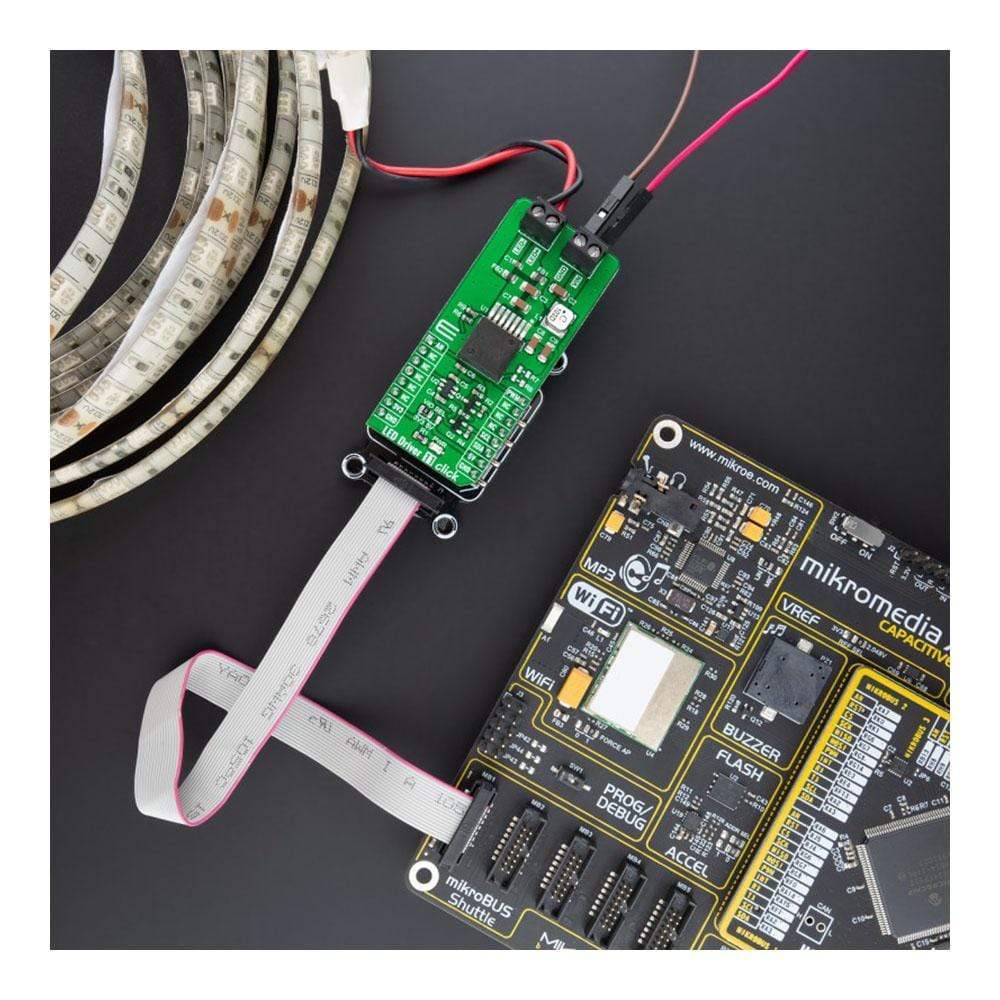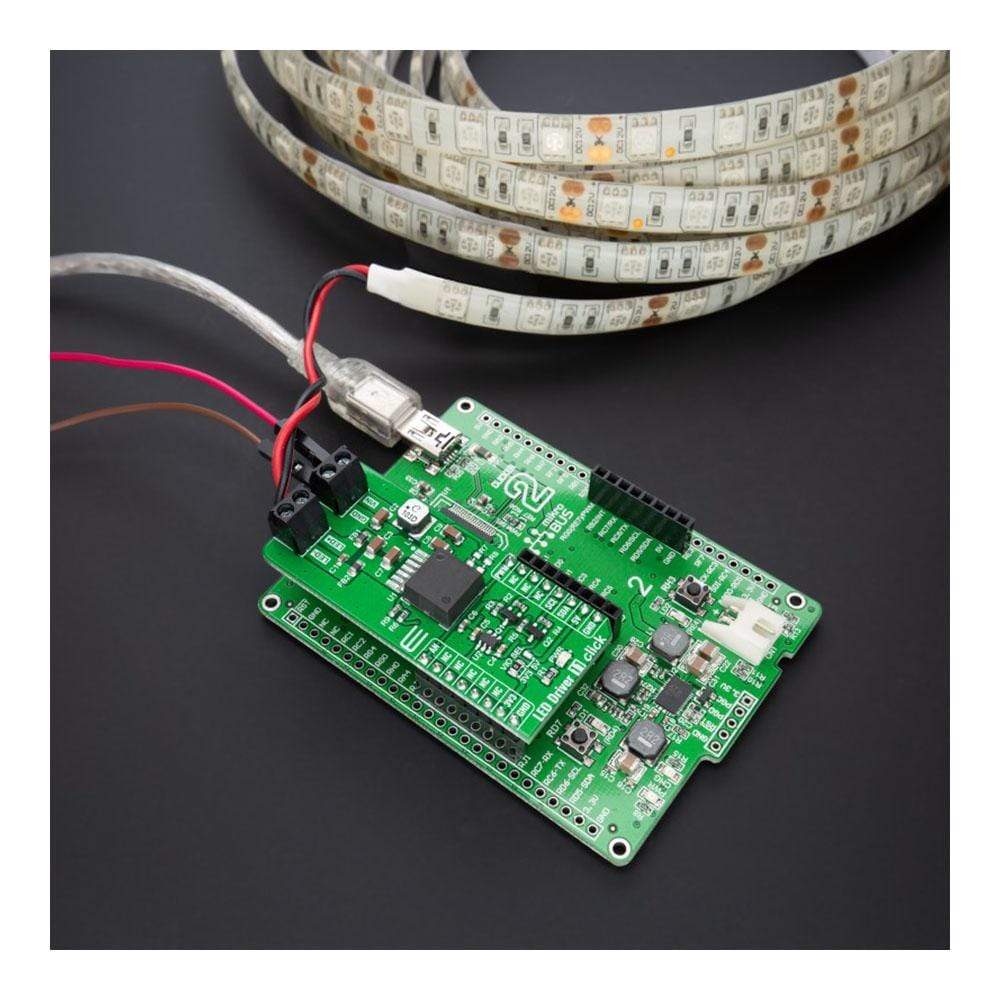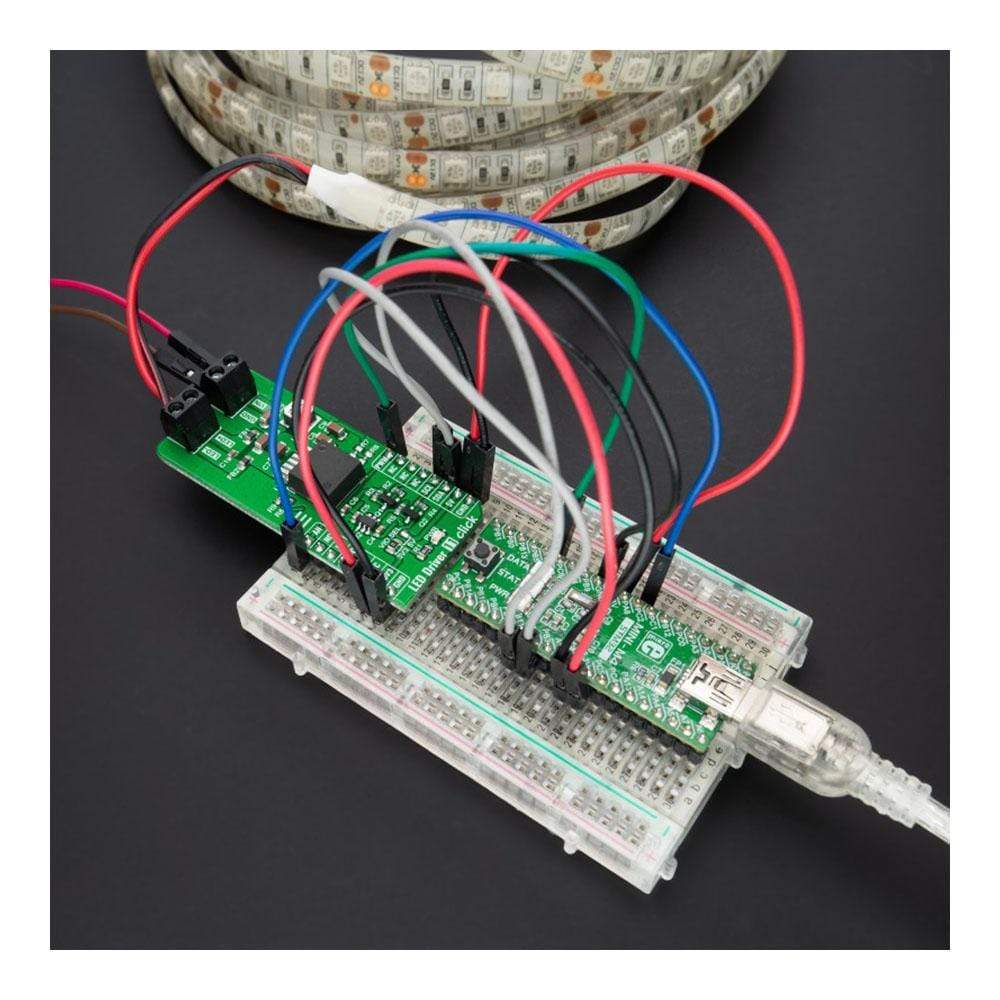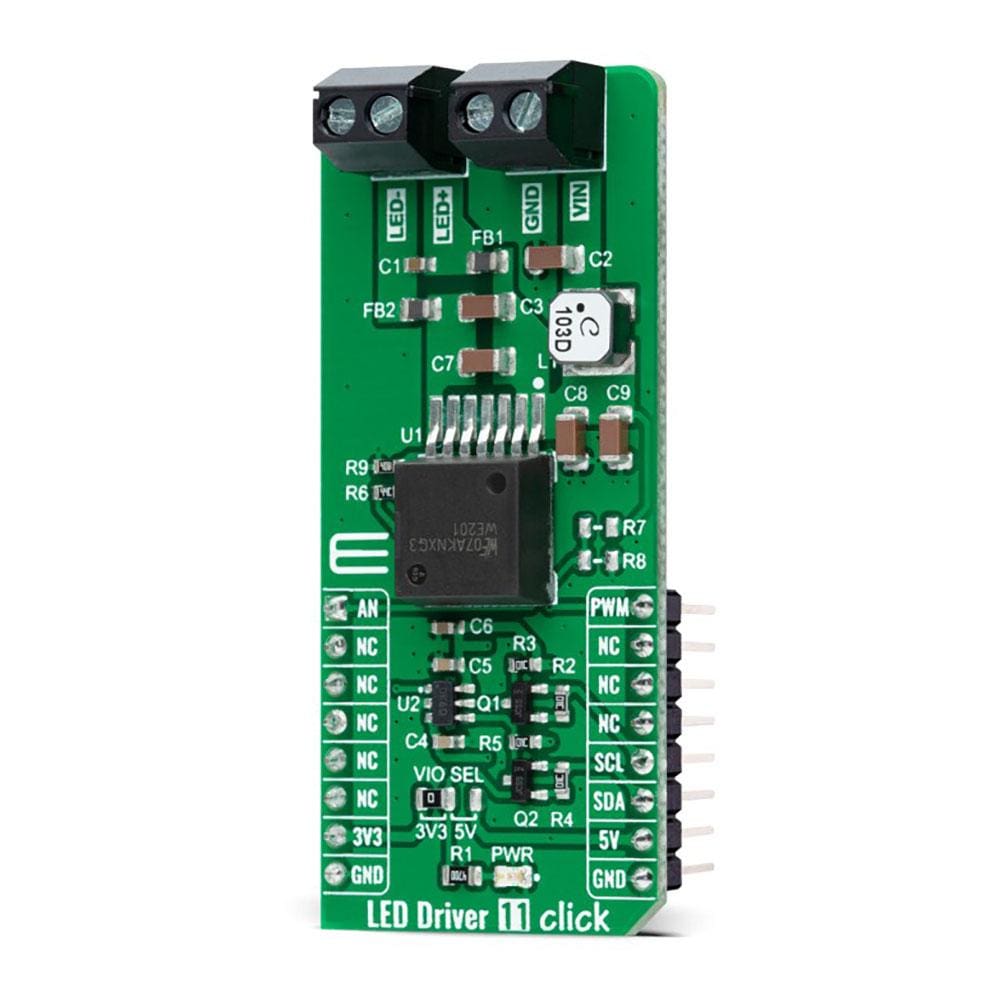
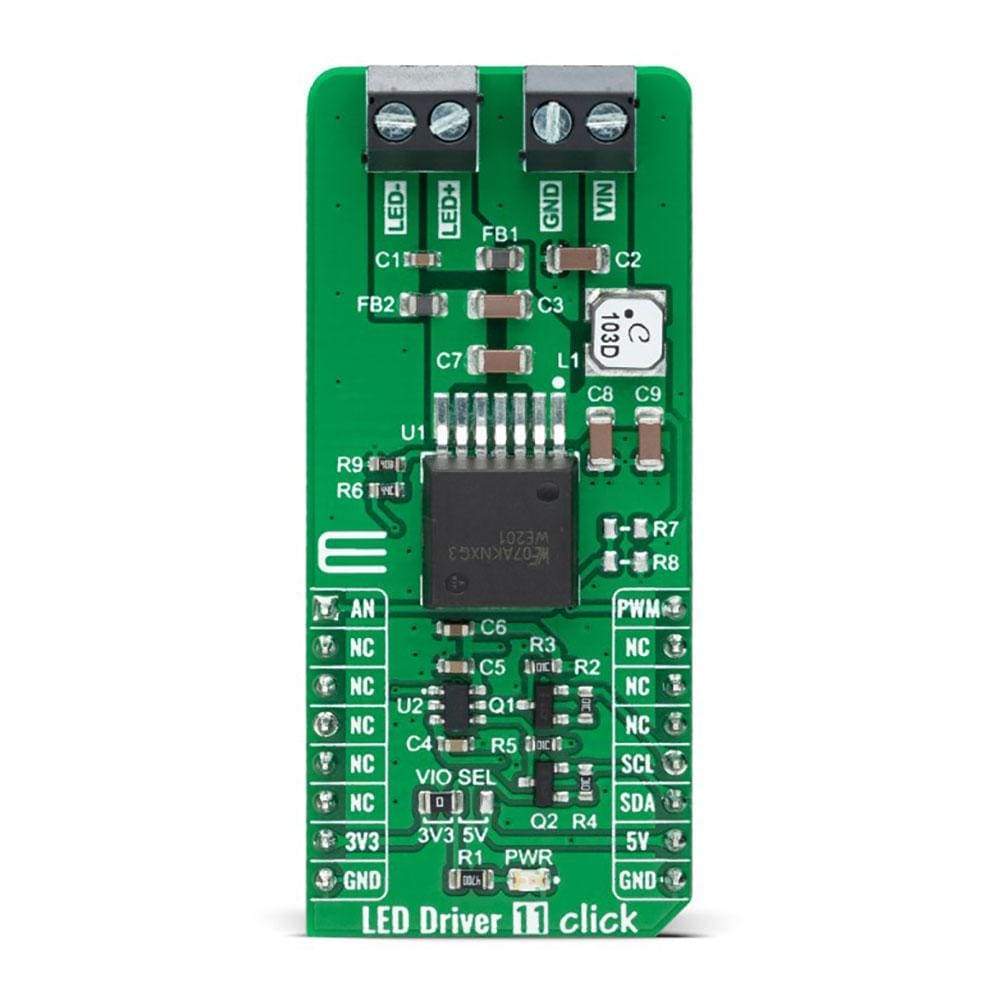

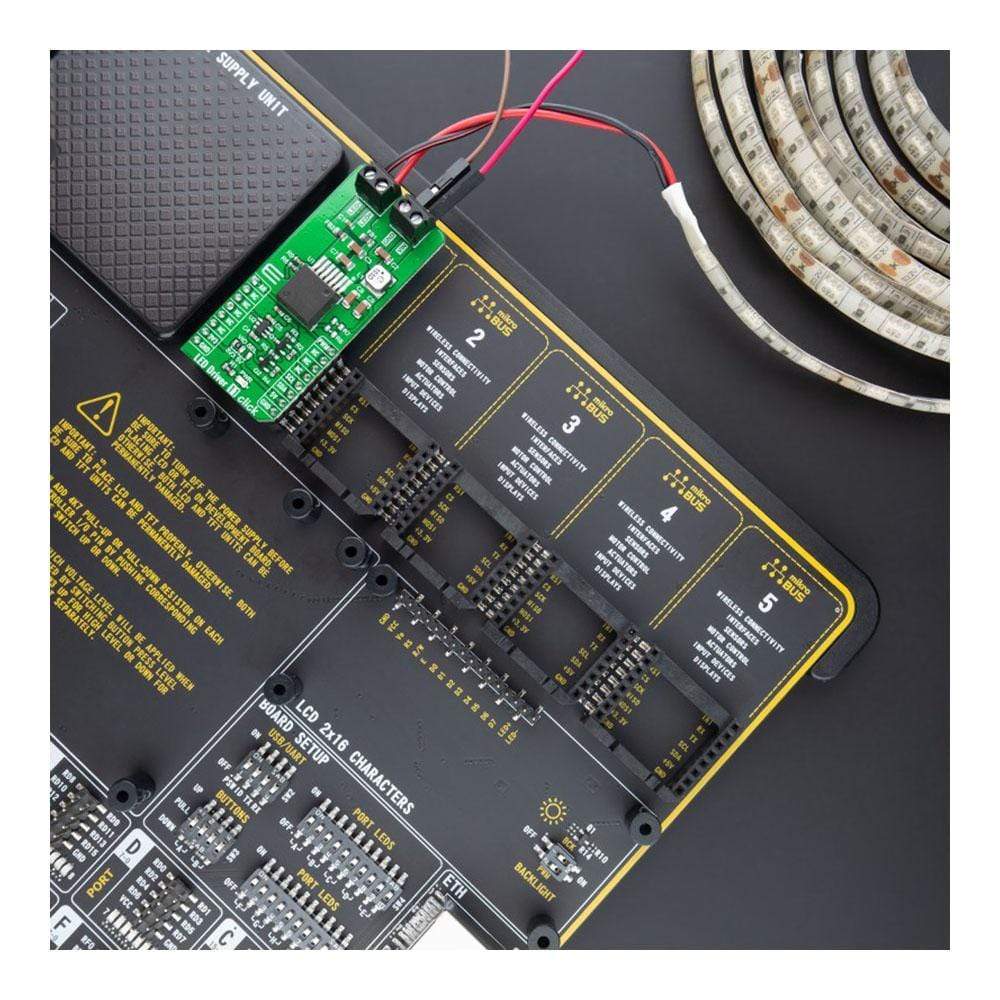
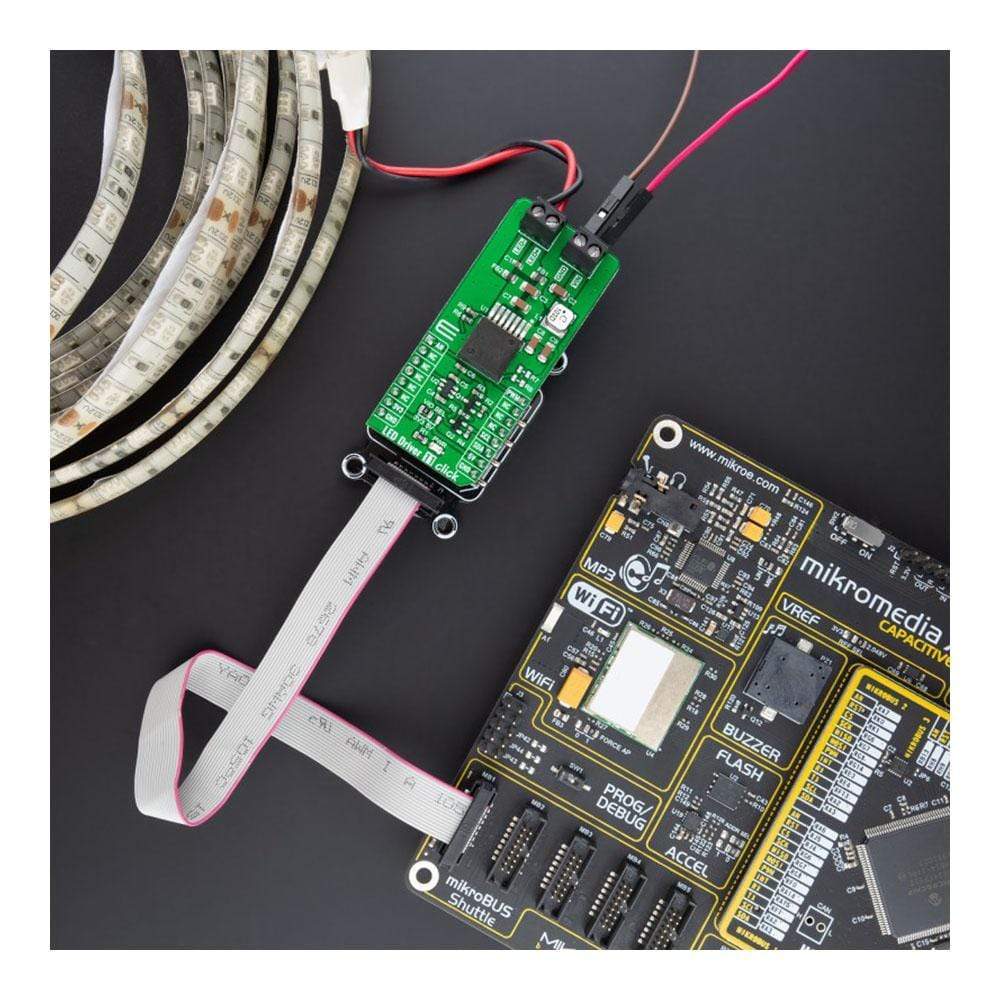
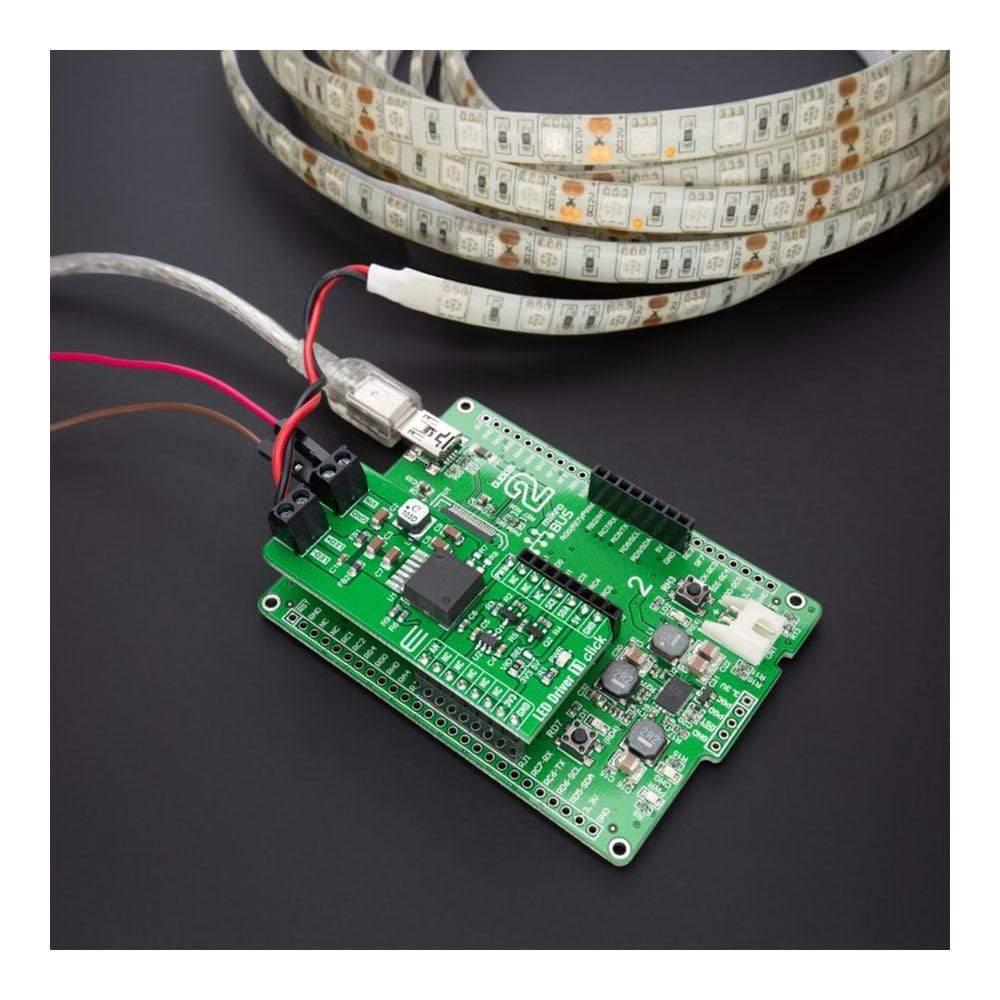
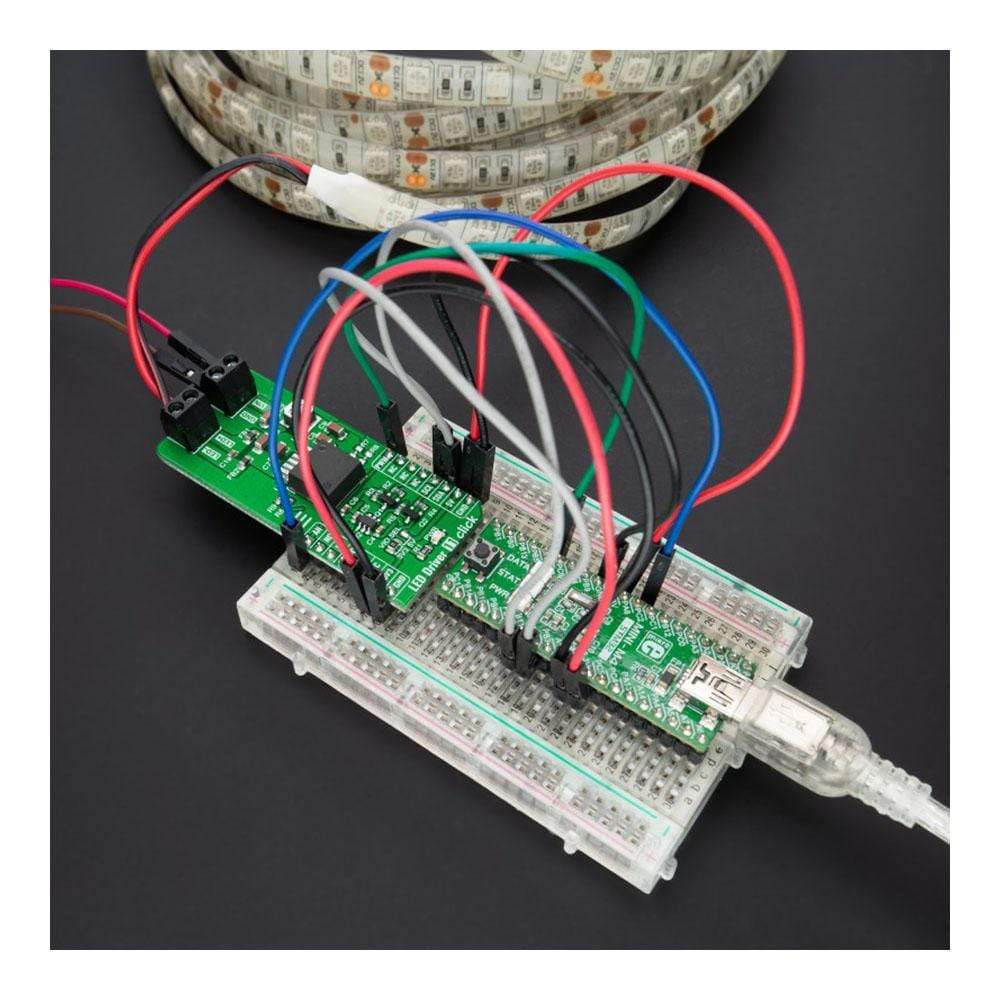
Overview
The LED Driver 11 Click Board™ is a compact add-on board that simplifies the control of multiple LEDs. This board features the WLMDU9456001JT (172946001), a fully integrated constant current LED driver with the buck switching regulator and inductor in a single package from Würth Elektronik. It offers high efficiency, delivers up to 450mA of LED current, and operates from 4.5V input voltage up to 60V, supporting up to 16 LEDs in series. It is designed for fast PWM dimming for no colour shift. This Click Board™ is suitable for colour mixing and backlight application for amusement products, LED status signalization, home automation projects, and many more.
The The LED Driver 11 Click Board™ is supported by a mikroSDK compliant library, which includes functions that simplify software development. This Click Board™ comes as a fully tested product, ready to be used on a system equipped with the mikroBUS™ socket.
Downloads
Le LED Driver 11 Click Board™ est une carte complémentaire compacte qui simplifie le contrôle de plusieurs LED. Cette carte comprend le WLMDU9456001JT (172946001), un pilote LED à courant constant entièrement intégré avec le régulateur de commutation buck et l'inducteur dans un seul boîtier de Würth Elektronik. Il offre une efficacité élevée, délivre jusqu'à 450 mA de courant LED et fonctionne à partir d'une tension d'entrée de 4,5 V jusqu'à 60 V, prenant en charge jusqu'à 16 LED en série. Il est conçu pour une gradation PWM rapide sans décalage de couleur. Ce Click Board™ convient au mélange de couleurs et aux applications de rétroéclairage pour les produits de divertissement, la signalisation d'état des LED, les projets de domotique et bien d'autres.
Le LED Driver 11 Click Board™ est pris en charge par une bibliothèque compatible mikroSDK, qui comprend des fonctions qui simplifient le développement logiciel. Cette Click Board™ est un produit entièrement testé, prêt à être utilisé sur un système équipé du socket mikroBUS™.
| General Information | |
|---|---|
Part Number (SKU) |
MIKROE-4757
|
Manufacturer |
|
| Physical and Mechanical | |
Weight |
0.02 kg
|
| Other | |
Country of Origin |
|
HS Code Customs Tariff code
|
|
EAN |
8606027383472
|
Warranty |
|
Frequently Asked Questions
Have a Question?
Be the first to ask a question about this.

